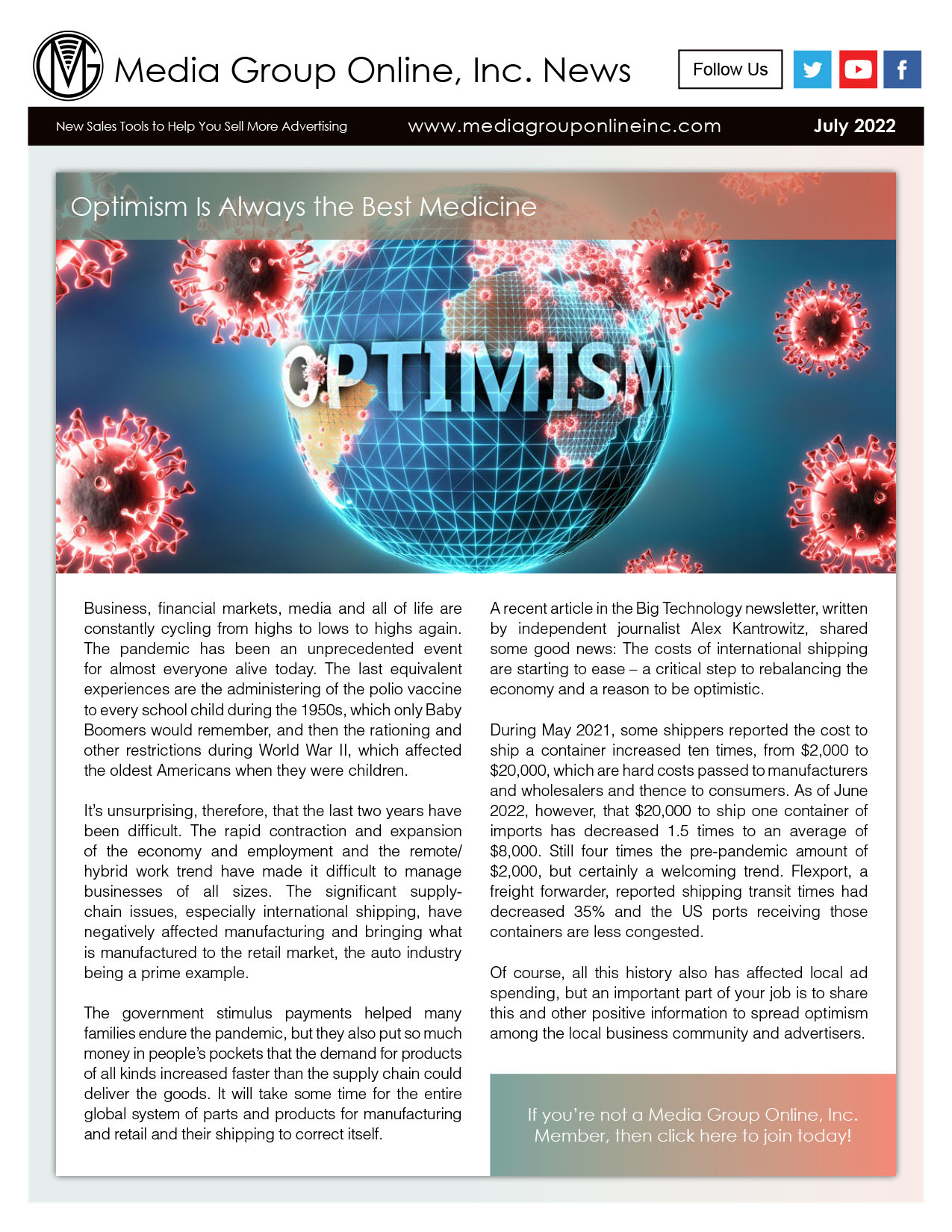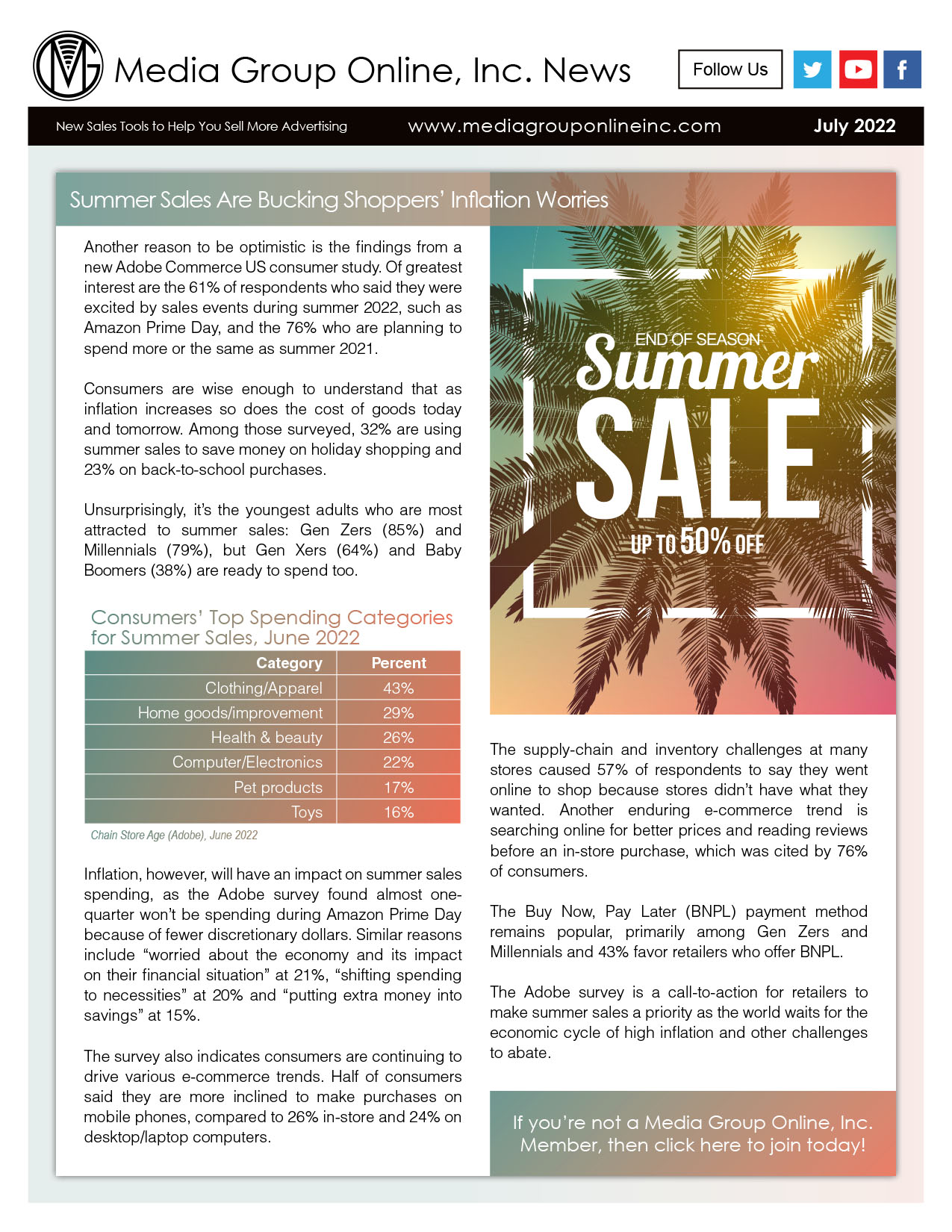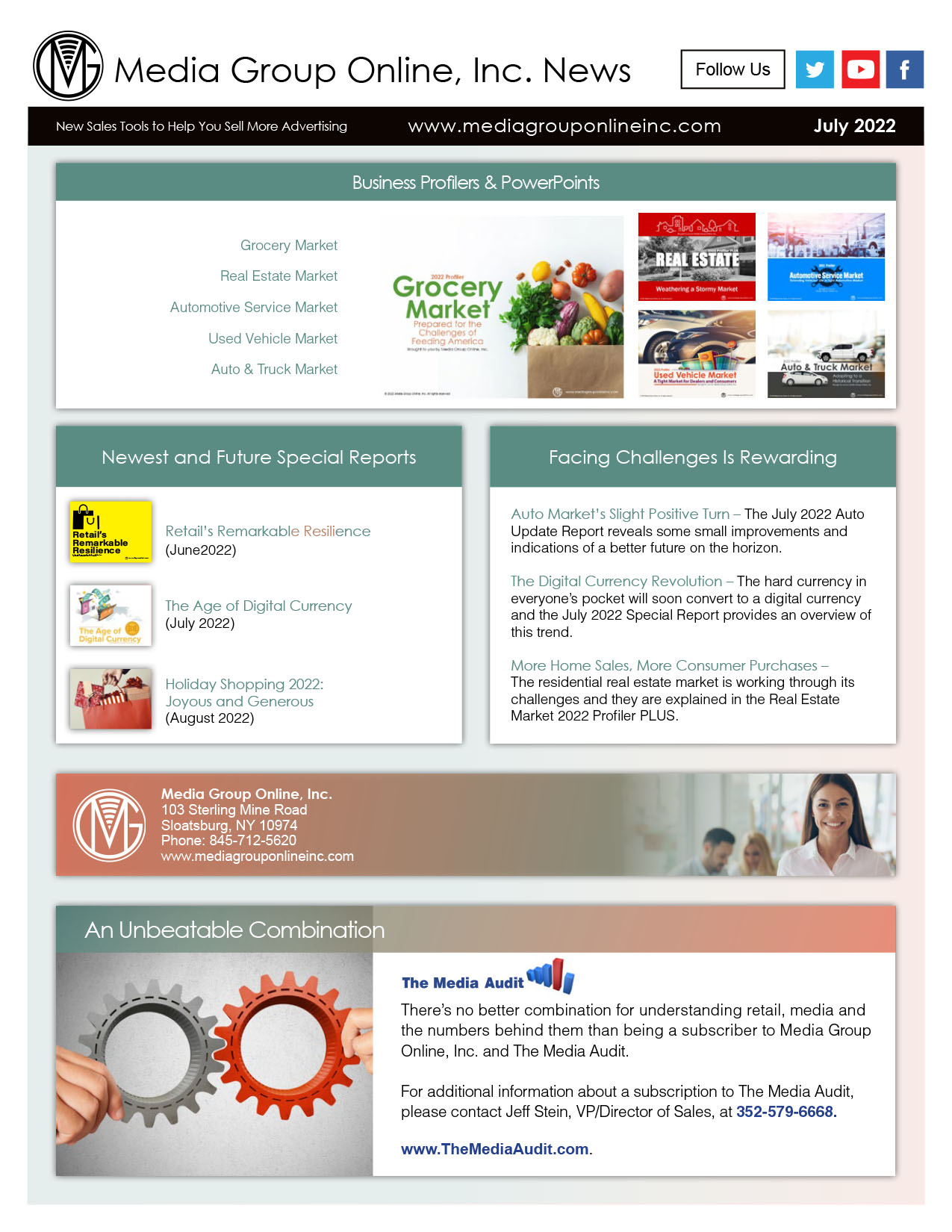Optimism Is Always the Best Medicine
Business, financial markets, media and all of life are constantly cycling from highs to lows to highs again. The pandemic has been an unprecedented event for almost everyone alive today. The last equivalent experiences are the administering of the polio vaccine to every school child during the 1950s, which only Baby Boomers would remember, and then the rationing and other restrictions during World War II, which affected the oldest Americans when they were children.
It’s unsurprising, therefore, that the last two years have been difficult. The rapid contraction and expansion of the economy and employment and the remote/hybrid work trend have made it difficult to manage businesses of all sizes. The significant supply-chain issues, especially international shipping, have negatively affected manufacturing and bringing what is manufactured to the retail market, the auto industry being a prime example.
The government stimulus payments helped many families endure the pandemic, but they also put so much money in people’s pockets that the demand for products of all kinds increased faster than the supply chain could deliver the goods. It will take some time for the entire global system of parts and products for manufacturing and retail and their shipping to correct itself.
A recent article in the Big Technology newsletter, written by independent journalist Alex Kantrowitz, shared some good news: The costs of international shipping are starting to ease – a critical step to rebalancing the economy and a reason to be optimistic.
During May 2021, some shippers reported the cost to ship a container increased ten times, from $2,000 to $20,000, which are hard costs passed to manufacturers and wholesalers and thence to consumers. As of June 2022, however, that $20,000 to ship one container of imports has decreased 1.5 times to an average of $8,000. Still four times the pre-pandemic amount of $2,000, but certainly a welcoming trend. Flexport, a freight forwarder, reported shipping transit times had decreased 35% and the US ports receiving those containers are less congested.
Of course, all this history also has affected local ad spending, but an important part of your job is to share this and other positive information to spread optimism among the local business community and advertisers.




